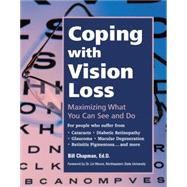
|
xiv | ||||
| Acknowledgments | xvi | ||||
| Foreword | xvii | ||||
| Introduction | |||||
|
1 | (7) | |||
| PART I: Vision and the Human Eye | |||||
|
8 | (14) | |||
|
|||||
|
|||||
|
|||||
|
|||||
|
|||||
|
|||||
|
22 | (13) | |||
|
|||||
|
|||||
|
|||||
|
|||||
|
|||||
|
35 | (8) | |||
|
|||||
|
|||||
|
|||||
|
|||||
|
|||||
|
|||||
|
43 | (5) | |||
|
|||||
|
|||||
|
|||||
| PART II: Other Things to Know | |||||
|
48 | (9) | |||
|
|||||
|
|||||
|
|||||
|
|||||
|
|||||
|
|||||
|
57 | (10) | |||
|
|||||
|
|||||
|
|||||
|
|||||
|
|||||
|
67 | (7) | |||
|
|||||
|
|||||
|
|||||
|
|||||
|
|||||
|
|||||
|
|||||
| PART III: Major Causes of Vision Loss | |||||
|
74 | (5) | |||
|
|||||
|
79 | (4) | |||
|
|||||
|
|||||
|
|||||
|
83 | (6) | |||
|
|||||
|
|||||
|
|||||
|
89 | (13) | |||
|
|||||
|
|||||
|
102 | (8) | |||
|
|||||
|
|||||
|
|||||
|
|||||
|
|||||
|
|||||
| PART IV: Coping Techniques and Equipment | |||||
|
110 | (4) | |||
|
|||||
|
|||||
|
114 | (9) | |||
|
|||||
|
|||||
|
123 | (3) | |||
|
|||||
|
126 | (6) | |||
|
|||||
|
|||||
|
|||||
|
|||||
|
|||||
|
132 | (3) | |||
|
|||||
|
135 | (1) | |||
|
136 | (3) | |||
|
|||||
|
139 | (21) | |||
|
|||||
|
|||||
|
|||||
|
|||||
|
160 | (3) | |||
|
163 | (6) | |||
|
|||||
|
|||||
|
169 | (3) | |||
|
172 | (4) | |||
|
|||||
|
|||||
|
176 | (3) | |||
|
|||||
|
|||||
|
179 | (5) | |||
|
|||||
|
|||||
|
|||||
|
184 | (4) | |||
|
|||||
|
|||||
|
188 | (2) | |||
|
190 | (2) | |||
|
192 | (3) | |||
|
195 | (1) | |||
|
196 | (4) | |||
| PART V: Specialized Knowledge and Skills | |||||
|
200 | (22) | |||
|
|||||
|
|||||
|
|||||
|
222 | (13) | |||
|
|||||
|
|||||
|
|||||
|
|||||
|
|||||
|
|||||
|
|||||
|
|||||
|
235 | (14) | |||
|
|||||
|
|||||
|
249 | (13) | |||
|
|||||
|
|||||
|
|||||
|
|||||
|
|||||
|
|||||
|
|||||
|
|||||
|
|||||
| Epilogue | 262 | (1) | |||
| Appendix A: An Eye Test Chart | 263 | (1) | |||
| Appendix B: Sources of Help | 264 | (7) | |||
| Appendix C: Instructions for Building a Plate Light | 271 | (2) | |||
| Endnotes | 273 | (1) | |||
| Bibliography | 274 | (2) | |||
| Index | 276 |
The New copy of this book will include any supplemental materials advertised. Please check the title of the book to determine if it should include any access cards, study guides, lab manuals, CDs, etc.
The Used, Rental and eBook copies of this book are not guaranteed to include any supplemental materials. Typically, only the book itself is included. This is true even if the title states it includes any access cards, study guides, lab manuals, CDs, etc.